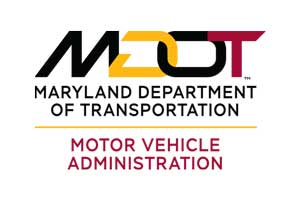Older Driver Safety
Age alone does not make unsafe drivers. However, all drivers should be aware of the risks that aging has on driving.

Getting older does not necessarily mean a person’s driving days are over. But it’s important to plan ahead and take steps to ensure the safety of yourself and your loved ones on the road. While aging can affect your driving, it is not the only factor that contributes to declining driving abilities.
All drivers should be aware of potential risks, know how to manage them, and know where to find helpful resources.
If you think you need to talk with an older driver about his or her driving abilities, remember that many older drivers view driving as a form of independence. Bringing up the subject of their driving abilities can make some drivers defensive. So be prepared with your observations and questions, and suggest alternative transportation options if necessary.
Assessing your Driving Abilities
Some of the changes you experience as you get older can affect your ability to drive safely. The following questions will help you decide if physical changes have affected your driving skills. Helpful tips about coping with these changes are also provided so that you can remain a safe driver for as long as possible.
- Reading signs easily?
- Recognizing someone you know from across the street?
- Seeing street markings, other cars, and people walking—especially at dawn, dusk and at night?
- Handling headlight glare at night?
If you said “Yes” to any of these questions, you should…
- Make sure you always wear your glasses and that the prescription is current.
- Keep your windshield, mirrors and headlights clean.
- Make sure that your headlights are working and aimed correctly.
- Sit high enough in your seat so you can see the road at least 10 feet in front of your vehicle.
- If you are 60 or older, see an eye doctor every year.
Loss of strength, coordination and flexibility can make it hard to control your vehicle.
Do you have trouble…
- Looking over your shoulder to change lanes?
- Moving your foot from the gas to the brake pedal?
- Turning the steering wheel?
- Noticing stopped emergency vehicles?
- Walking less than a block a day?
- Going up or down stairs because you have pain in your knees, legs or ankles?
If you said “Yes” to any of these questions, you should…
- Check with your doctor about physical/occupational therapy, medicine, stretching exercises, or a walking or fitness program.
- Know that an automatic transmission, power steering and brakes, and other special equipment can make it easier for you to drive your vehicle and use the foot pedals.
- Reduce your driver’s side blind spot by moving your mirrors.
- Consider finding reliable alternative transportation options, i.e., public transportation or ride sharing services.
Do you…
- Feel confused by traffic signs, and people and cars in traffic?
- Take medicine that makes you sleepy?
- Get dizzy, or have seizures or losses of consciousness?
- React slowly to normal driving situations?
If you said “Yes” to any of these questions, you should stop driving until the condition has been addressed** and you have developed a plan to drive safely or to use an alternate means of transportation. If you return to driving, please consider…
- Asking your doctor if your health or side effects from your medicine can affect your driving.
- Taking routes that you know.
- Trying to drive during the day (avoid rush hour).
- Keeping a safe distance between you and the car ahead of you.
- Always scanning the road while you are driving so that you are ready for any problems and can plan your actions.
**No one who answers yes to any of these questions should drive, as they pose a risk to themselves and to other road users.
Sometimes other people notice things about your driving that you might have missed. Have people you know and trust said they were concerned about your driving?
If so, consider the following…
- Talk with your doctor. Ask him or her to check the side effects of any medicines you are taking.
- Try walking, carpooling, public transit, and other forms of transportation.
What You Can Do
If You’re a Concerned Family Member: Talking about driving with a loved one
Talking with an older person about their driving is often difficult. Most of us delay that talk until the person’s driving has become what we believe to be dangerous. At that point, conversations can be tense and awkward for everyone involved. But there are things you can say and do to make those conversations more productive and less tense.
Learning How to Understand and Influence Older Drivers will help you support an older driver’s needs, as well as find community resources that can help put your older-driver plan into action. If you have decided to initiate a conversation with an older loved one about driving safely, take these three steps:
- Collect information;
- Develop a plan of action; and
- Follow through on the plan.
You might also want to consider learning how to adapt a motor vehicle to accommodate the unique needs of an older driver and discussing it with your loved one.
If you’re an Older Driver: Tips to drive safely while aging gracefully
Decisions about your ability to drive should never be based on age alone. However, changes in vision, physical fitness and reflexes may cause safety concerns. By accurately assessing age-related changes, you can adjust your driving habits to remain safe on the road or choose other kinds of transportation.
If you’ve noticed changes in your vision, physical fitness, attention, and ability to quickly react to sudden changes, it’s important to understand how these changes may be affecting your ability to drive safely. Driving Safely While Aging Gracefully is a resource developed by the USAA Educational Foundation, AARP and NHTSA to help you recognize warning signs and pick up useful tips on what you can do to remain a safe driver.
One way to stay safe while driving is by making sure you understand how medical conditions can impact your ability to drive safely. Another way is by adapting your motor vehicle to make sure it fits you properly, as well as choosing appropriate features, installing and knowing how to use adaptive devices, and practicing good vehicle maintenance.
Additional Older Driver Resources
Below are specific Maryland resources and other nationwide programs geared toward older driver safety.
AAA Self- Rating Tool
AAA’s 15 short questions to test your driving skills and habits.
CarFit
CarFit is an educational program that offers older adults the opportunity to check how well their personal vehicles "fit" them.
The CarFit program also provides information and materials on community-specific resources that could enhance their safety as drivers, and/or increase their mobility in the community.
MDOT MVA - Older Driver Resource Guide
MDOT MVA has put together this resource guide to help older drivers in their decision of operating a motor vehicle.

MVA Medical Review Board
Visit MVA for information about the Medical Review Process and licensing for Older & Medically At-Risk Drivers


